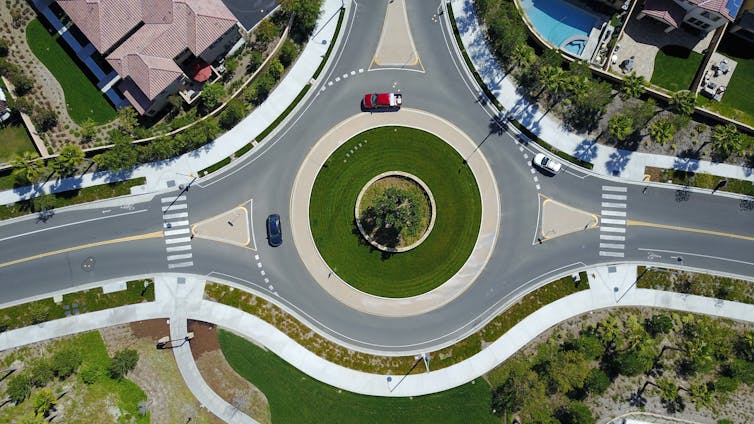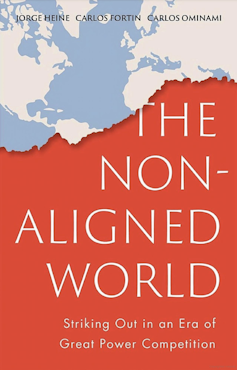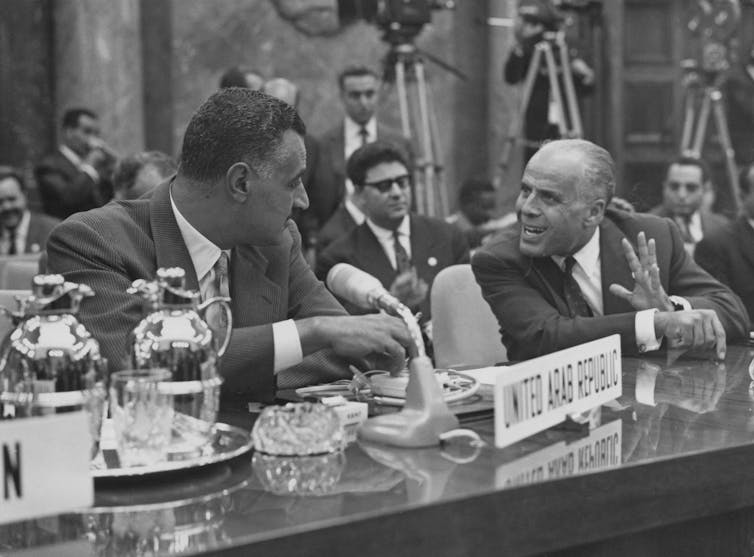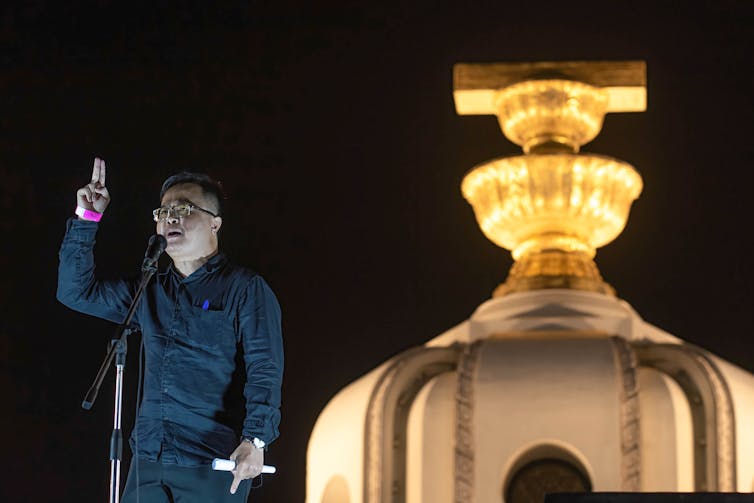Source: The Conversation – France (in French) – By Jules Bellon, Doctorant en science des matériaux, UniLaSalle
Et si, au lieu de les trier pour les recycler, on pouvait simplement jeter ses emballages plastiques au compost, avec nos déchets organiques ? Les plastiques biodégradables semblent la meilleure solution pour réduire la pollution produite par ces matériaux. La biodégradabilité de ces matériaux doit cependant encore être améliorée dans ces conditions.
Ils sont partout, et rien ne semble les arrêter. Les plastiques ont envahi notre quotidien, nos paysages… et même nos organismes. Depuis les années 1950, la production de ce matériau à la fois pratique, polyvalent et bon marché a explosé. Aujourd’hui, tous les secteurs y ont recours : emballages, vêtements, objets du quotidien, instruments de musique, dispositifs médicaux… jusqu’aux cœurs artificiels, dont certaines parties sont désormais faites de plastique.
Face à cette omniprésence, le recyclage tente de limiter l’impact environnemental, mais il reste insuffisant. Le plastique s’accumule dans les océans en d’immenses plaques flottantes à la dérive, mais aussi de façon invisible sous forme de micro – et nanoparticules que nous ingérons en mangeant, en buvant, ou en respirant.
Contre cette pollution massive, il existe des leviers d’action, parfois méconnus, qui méritent toute notre attention. Parmi eux : les plastiques biodégradables, à condition de leur offrir des conditions de fin de vie réellement adaptées.
Du lundi au vendredi + le dimanche, recevez gratuitement les analyses et décryptages de nos experts pour un autre regard sur l’actualité. Abonnez-vous dès aujourd’hui !
Des matériaux qui se dégradent rapidement
À l’image de la cigarette, le meilleur plastique est sans doute celui qu’on ne consomme pas. Mais dans certains cas, il reste difficile de s’en passer complètement. Prenons un exemple courant : les barquettes de viande en supermarché. Leur emballage plastique protège les aliments des contaminations microbiennes et prolonge leur durée de conservation, limitant ainsi le gaspillage alimentaire.
C’est dans ce contexte que les plastiques biodégradables prennent tout leur sens. Bien qu’ils soient souvent issus de ressources renouvelables – végétales ou microbiennes – ce n’est pas toujours le cas : un plastique peut être biodégradable sans être biosourcé, et inversement. Pour les plastiques biosourcés, leurs constituants élémentaires peuvent être extraits, par exemple, de l’amidon contenu dans les grains de blé. D’autres, comme les polyhydroxyalcanoates (PHAs), sont synthétisés directement par certaines bactéries en tant que réserves d’énergie. Ces polymères sont déjà utilisés aujourd’hui pour la fabrication de pailles ou de vaisselle à usage unique.
Contrairement aux plastiques conventionnels, qui peuvent persister pendant des siècles dans l’environnement, ces matériaux sont conçus pour se biodégrader plus rapidement. Ils ont la capacité de se décomposer en éléments naturels (eau, dioxyde de carbone, biomasse) sous l’action de micro-organismes, à condition que les bonnes conditions de température, d’humidité et d’aération soient réunies. Comme tous les plastiques, ils sont constitués de chaînes de molécules attachées entre elles. Mais dans les plastiques biodégradables, ces liaisons chimiques sont plus fragiles, notamment les liaisons dites esters ou glycosidiques. Cela les rend accessibles à des micro-organismes capables de les dégrader, en les utilisant comme source de carbone et d’énergie. Dans les bonnes conditions, ce processus permet d’éviter la formation de micro – ou nanoparticules persistantes.
En comparaison, les plastiques conventionnels ne sont pour l’instant recyclés qu’en faible proportion. Et contrairement au verre ou au métal, leur recyclage ne peut être répété indéfiniment : à chaque cycle, leurs propriétés mécaniques se détériorent et il est donc nécessaire d’ajouter à la matière recyclée du plastique neuf. L’incinération, autre option, reste coûteuse et génère des émissions polluantes, malgré les dispositifs de récupération d’énergie.
Améliorer la filière comme alternative au recyclage
Une fois dégradés par les micro-organismes, ces plastiques sont transformés en composés simples, comme du dioxyde de carbone ou de l’eau, et permettent aux bactéries de se multiplier. Ils ne nourrissent pas directement les plantes, car ils sont le plus souvent dépourvus des éléments minéraux nécessaires à leur nutrition. En revanche, une fois dégradés, ils peuvent malgré tout réintégrer le cycle biologique des sols en soutenant l’activité microbienne.
Leur biodégradabilité peut même être améliorée en ajoutant certains constituants organiques dans leur composition. Ce peut-être par exemple des déchets provenant de l’industrie agroalimentaire, comme de la poudre de pelures d’orange ou de bananes, après une étape de séchage et de broyage. En plus d’accélérer le processus de biodégradation, cela permet de valoriser économiquement ces biodéchets, qui finissent souvent en décharge et polluent les sols et les cours d’eau environnants.
Cette capacité à disparaître a cependant un coût : les plastiques biodégradables présentent souvent des propriétés mécaniques plus limitées, encore variables selon les formulations. Par exemple, les sacs en plastique biodégradables peuvent avoir une plus faible résistance à la traction, les rendant plus susceptibles de se rompre sous le poids de leur contenu. Ils sont également, pour l’instant, plus coûteux à produire que leurs équivalents conventionnels. Toutefois, le développement de filières industrielles dédiées et la mise en place d’unités de production à grande échelle pourraient, à terme, permettre de réduire ces coûts grâce à des économies d’échelle.
Le compostage domestique des plastiques : (presque) que des avantages
Mais attention : pour qu’un plastique biodégradable se décompose réellement, certaines conditions doivent être réunies. Cela nécessite une température et une humidité suffisantes, ainsi qu’une population microbienne capable de rompre les liaisons chimiques spécifiques du matériau. Or, tous les environnements naturels ne remplissent pas ces critères. C’est pourquoi il est essentiel de leur assurer une fin de vie appropriée – par exemple, dans un tas de compost, milieu riche en bactéries et en champignons. On distingue alors deux types de compostage : le compostage centralisé (ou industriel) et le compostage domestique.
Le compostage industriel repose sur la collecte des biodéchets, leur transport et leur traitement dans des installations spécifiques. Ce modèle exige des infrastructures coûteuses, du personnel qualifié, une logistique importante, et génère une empreinte carbone liée au transport. En France, cette filière reste encore en développement. Si elle devait devenir un canal privilégié pour les plastiques biodégradables, elle nécessiterait un effort de structuration conséquent.
À l’inverse, le compostage domestique permet d’éviter en grande partie ces contraintes. Depuis janvier 2024, le tri des biodéchets à la source est devenu obligatoire pour les ménages. Les emballages à usage unique portant une certification de compostabilité domestique (comme la norme NF T51-800) peuvent donc être ajoutés aux déchets alimentaires dans un bac à compost familial.
La dégradation des plastiques biodégradables est certes plus lente en compostage domestique qu’en compostage industriel, en raison de températures plus basses et de conditions moins contrôlées. Pourtant, ce mode de traitement local, sans coûts de collecte ni de transport, présente un réel potentiel dans une logique d’économie circulaire. Pour que cette filière décentralisée puisse se développer de manière crédible, accessible et efficace, il reste toutefois essentiel d’améliorer la biodégradabilité des plastiques, en particulier celle des principaux polymères utilisés dans les formulations.
Améliorer le processus et sensibiliser par l’action individuelle
Plusieurs pistes émergent pour relever ce défi, comme le développement de biocomposites intégrant des coproduits organiques, ou encore des stratégies d’enrichissement biologique du milieu de compostage. Par exemple, des souches microbiennes spécifiques ou des additifs naturels (comme le lait écrémé) peuvent stimuler l’activité microbienne et accélérer la biodégradation. Ces approches pourraient donner lieu à la commercialisation de nouveaux « activateurs de compost », utilisables aussi bien par les ménages que par les collectivités ou entreprises assurant la gestion de composteurs dits communautaires – une autre voie prometteuse pour un compostage décentralisé, à l’échelle des quartiers ou des communes.
Enfin, au-delà de l’aspect technique, ce modèle a une vertu éducative : en participant à la dégradation des emballages, les consommateurs prennent conscience de leur impact environnemental. Cette prise de conscience peut les inciter à réduire leur production de déchets, à privilégier le vrac ou à adopter des contenants réutilisables. Et c’est ainsi que se met en marche, peu à peu, un véritable cercle vertueux.
![]()
Jules Bellon a reçu un financement de la Région Normandie (RIN50: 22 E01400 – 00123402) afin de mener ses travaux de recherche.
Feriel Bacoup et Gattin Richard ne travaillent pas, ne conseillent pas, ne possèdent pas de parts, ne reçoivent pas de fonds d’une organisation qui pourrait tirer profit de cet article, et n’ont déclaré aucune autre affiliation que leur poste universitaire.
– ref. À quand des déchets plastiques biodégradables, à composter chez soi ? – https://theconversation.com/a-quand-des-dechets-plastiques-biodegradables-a-composter-chez-soi-257914











